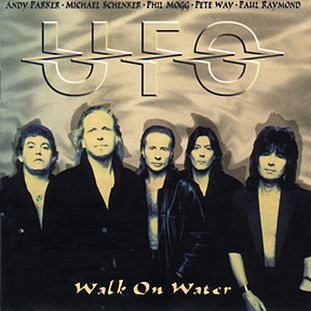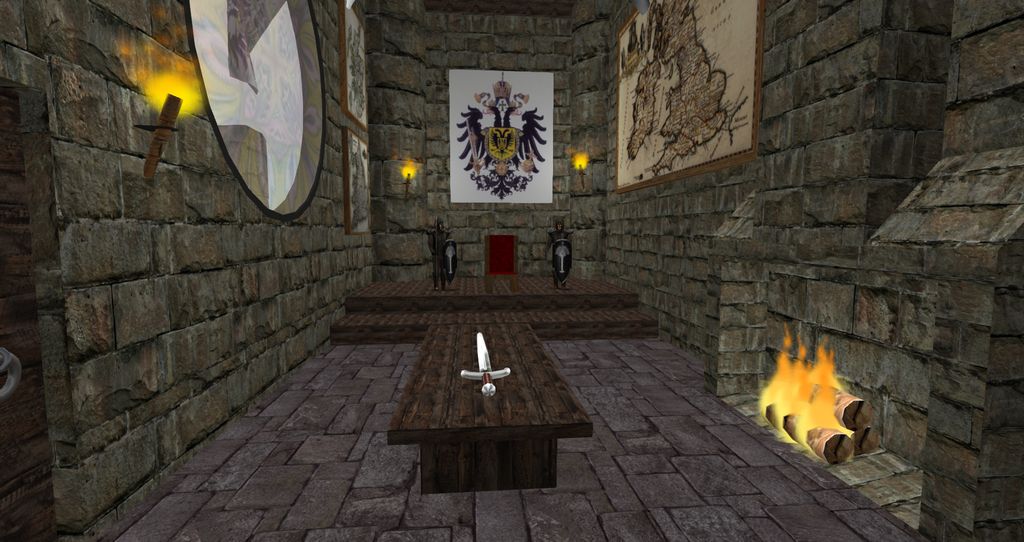Major modules I have been lecturer for over the years:
Bifurcations, Catastrophes and Symmetry
Bifurcations: The basic underpinning theory for the module, preliminaries, typical co-dimension one bifurcations (transcritical, saddle-node, pitchfork), examples of bifurcations in two dimensions, centre manifold reduction and periodic solutions via Hopf bifurcations, structural stability and a little bit of Hartman-Grobman and chaos thrown in for good measure.
Catastrophes: Essentially sticking to “elementary” catastrophe theory to avoid controversy (see end of this list!): Euler Strut, canonical cusp catastrophe, Spruce-Budworm populations, right equivalence, co-dimension, Hadamard’s Lemma, germs, jets, versal unfoldings, bifurcation geometry of Ak singularities, Gravitational Catastrophe Machine, ship stability, Zeeman Catastrophe Machine, stock prices, discussion on the “catastrophe controversy”, Thom’s Seven Elementary Catastrophes.
Symmetry: D4-invariant functional, deformations of an elastic cube, group representations, invariance, equivariance, isotropy subgroups, fixed point subspaces, group orbits and conjugacies, axial subgroups, Liapunov Schmidt reduction, Equivariant Branching Lemma, speciation example (Sn) , brief mention of stability and restrictions on the Jacobian, Animal Gaits, spatio-temporal symmetries, twisted subgroups, coupled oscillators, Γ-simple, Equivariant Hopf Theorem, rings of cells, H/K Theorem, gaits revisited.
Virtual Mathematics
Exploring different ways to disseminate mathematics online. 100% assessed, half through reflective blogs, group wiki and class tasks, the other half individual online projects aimed at one of gifted and talented, public understanding of science, undergraduates or struggling school kids.
- Basic HTML (creating web pages from scratch)
- Introduction to LaTeX and how to embed in web pages (using MathJax)
- SiteBuilder
- Knowing your Audience (including a session with Ian Stewart on writing popular science books)
- Web 1.0: Blogs, Wikis and Forums for dissemination (including impromptu use of Twitter to discuss a maths problem)
- Using Prezi to design online presentations
- Using Jing to explore screen captures
- Second Life (basic movement, building, scripting and importing web based material)
- Bringing it all together
Equivariant Bifurcation Theory
Introduction to equivariant bifurcation theory based largely on The Symmetry Perspective, and Singularities and Groups in Bifurcation Theory: Vol 2 run firstly as a Reading Module, and then as a regular 3rd year undergraduate module.
- Overview: Basic bifurcation theory (standard one parameter bifurcations) and symmetry groups (essentially revision).
- Steady-State Bifurcation: Symmetries of ODEs, Liapunov Schmidt reduction, Equivariant Branching Lemma, applications (inc. coupled cell networks and speciation).
- Linear Stability: Symmetry of the Jacobian, Hilbert Bases and Equivariant Mappings, examples of Dn Steady State Bifurcations and Sn Invariant Theory.
- Time Periocicity and Spatio-Temporal Symmetry: Animal gaits, characterization of possible spatio-temporal symmetries, rings of cells, coupled cell networks.
- Hopf Bifurcation with Symmetry: linear analysis, the Equivariant Hopf Theorem, Poincaré-Birkhoff Normal Form, Hopf Bifurcation in Coupled Cell Networks (esp Dn), mode interactions.
- Further topics from (depending on time and interest): Forced symmetry breaking, Euclidean Equivariant systems (example of liquid crystals), bifurcation from group orbits (Taylor Couette), heteroclinic cycles, symmetric chaos, Reaction-Diffusion equations, hidden symmetries, networks of cells (groupoid formalism).
Foundations
Exploring the foundations of undergraduate mathematics from introducing set theory, idea of proof to equivalence relations and basic group theory:
- Proof by induction
- Euclid’s algorithm
- Sets, set notation and set operations
- Symbolic logic, logical connectives, quantifiers and the relation between logic and forms of proof
- Functions, domains, targets, compositions and inverses
- Equivalence relations
- Infinite sets and cardinality
- The construction of number systems (including complex numbers) from set theory
- Modular arithmetic and permutations as examples of groups
- Introductory abstract groups theory: axioms, subgroups, cosets and Lagrange’s theorem
Differential Equations
Introduction to differential equations from trivial first order ODEs through second order linear ODEs to systems of ODEs:
1. FIRST ORDER ORDINARY DIFFERENTIAL EQUATIONS
• Trivial first order
• Existence and uniqueness
• First order linear equations with examples
• Substitution methods
• Direction Fields
• Autonomous first order ODEs
2. SECOND ORDER ORDINARY DIFFERENTIAL EQUATIONS
• General homogeneous equations
• Linear second order equations with constant coefficients
• Mass/spring systems
• Inhomogeneous linear second order equations
• Mass/spring systems with forcing
3. INTRODUCTION TO DIFFERENCE EQUATIONS
• Motivation (numerical methods)
• First order homogeneous linear difference equations
• Second order linear equations
• First order autonomous nonlinear equations
4. SYSTEMS OF FIRST ORDER LINEAR ODES
• In general
• Coupled 2×2 linear systems with constant coefficients
• Phase portraits and change of variable
• Functions of two variables and linearisation
5. DISCUSSION OF FURTHER TOPICS (non-examinable)
• Three dimensional systems, chaos, nonautonomous second order differential equations
3D Geometry and Motion
Line integrals and multi-variate calculus.
- Curves and line integrals in 2 and 3 dimensions Curves and their parameterisation; distinction between the two; sketching simple curves; conic sections; derivation of Cartesian equation of ellipse and hyperbola from their geometric definition; polar coordinates on R2; polar form of conic sections; unit tangent, curvature and principal normal; line integral of a function (i. e. integration with respect to arc length).
- Integration Integration over rectangles; interpretation in case of two variables
as signed volume between graph and the xy plane; calculation of the multidimensional integral by a repeated integral (i. e. loose
statement of Fubini’s theorem); change of order of integration; integration
over domains bounded by graphs; change of variables formula; Jacobian matrix and Jacobian determinant; average of a function; mass, centre of mass, centroid. - Surfaces and Surface Integrals Simple examples, including plane, sphere, cylinder, torus, surfaces of revolution, graph of a function of two variables; regular parameterisation of a surface; equation of tangent plane and normal to a surface; integration with respect to element of area (including flux integrals) on a surface in R3. Examples.
- Introduction to particle mechanics The concept of force; Newton’s Laws and calculation of particle paths when the force is given as a function of time; constant gravitational acceleration; motion of projectiles; angular momentum and its geometric interpretation; moment/torque of a force. Motion under central forces. Conservation of angular momentum and its geometric interpretation; velocity and speed in polar coordinates; Newton’s Law of Gravitation. Gravitational potential energy. Planetary and satellite orbits; Kepler’s laws.
Modelling Nature’s Non-linearity
General introduction to techniques and applications in dynamical systems through examples in the natural world. 100% assessed through two assignments and a mini-project actually starting to build a mathematical model of a topical real world problem.
- Evolutionary Game Theory Hawk-Dove and Hawk-Dove-Bully-Retaliator games used to introduce simple Game Theory techniques. Evolutionary Stable Strategies, corresponding dynamical systems, fixed points and dynamics on symplices. Essentially how population dynamics can be explained through how individuals interact with each other.
- Nonlinear Oscillations Overview of linear oscillations (by mechanical and electrical examples), self excited oscillations (including Van Der Pol oscillator), Duffings Equation including forcing and non-forcing cases, vector fields, extended phase space, Poincare Maps, stability, Homoclinic Tangles (leading to chaos). Epidemics SEIR equations, discussion of contact rates and attractors for measles and chicken-pox, are such epidemics periodic or chaotic? Kermack-McKendrick model as a more analytical example.
- Dynamical Systems Discrete and continuous dynamical systems, fixed points and periodic points/orbits and stabilities. Examples include Hawk-Dove and Henon map. Invariant sets, attractors, Strange Attractors, structural stability.
- Sensitive Dependence Lyapunov Characteristic Exponents, Lyapunov Spectrum, chaotic attractors, practical method for computing LCE. Discussion on implications of chaos, and ways to ’control’ chaotic systems.
- Bifurcations and Catastrophes How small changes to parameters can lead to large (’catastrophic’) changes to a physical system. Euler Strut, cusp catastrophes, decision making (intelligent vs. non-intelligent), the Canonical Cusp Catastrophe, catastrophe set, singularities, the Spruce-Budworm and brief mention of the seven elementary catastrophes. Hopf bifurcation (introduced by wavy rolls in convection), linearisation and eigenvalues at a Hopf bifurcation, Hopf theorems (a Hopf bifurcation is a process which forms periodic orbits).
- Coupled Oscillators Fireflies as an example of coupled integrate and fire models, linearly coupled relaxation oscillators, introduction to patterns observed in symmetrically coupled oscillators through the symmetries of animal gaits. A discussion of how symmetry affects ’steady-state’solutions.
- Fractals A rather basic introduction to Fractals through the Middle Third Cantor Set, Koch Curve, Julia Sets, spaces of Fractals, chaotic repellors, iterated function systems, dimension (counting and Hausdorff dimensions).
Problem Solving
Module usually run by the Institute of Education (now Centre for Education Studies) which I took over for 2013/14 to prevent it being suspended, since it is mainly taken by students from the Mathematics department. The module follows “Thinking Mathematically” by Mason, Burton and Stacey and investigates problem solving techniques through a series of two hour “lecture sessions” and weekly problem solving seminars. Assessed by those seminars (10%), assignment (40%) and two hour exam (50%).









